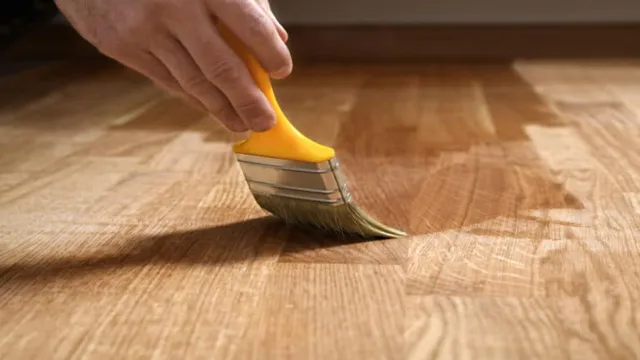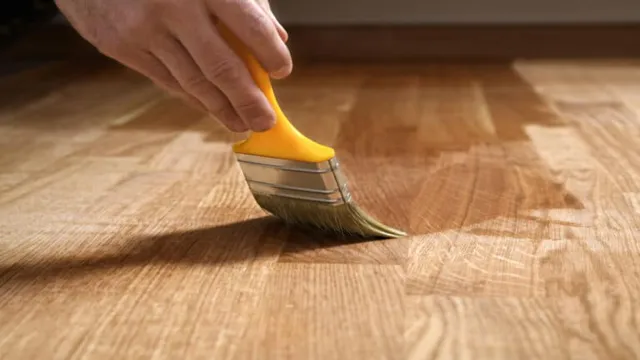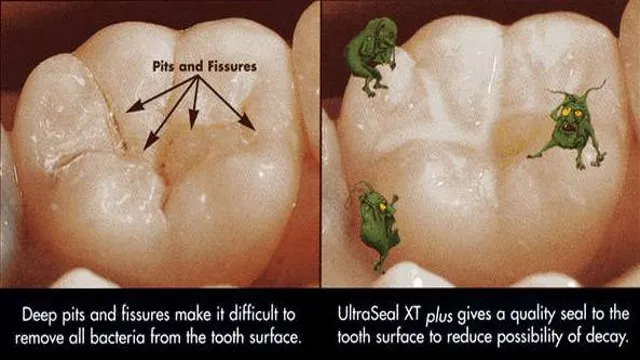How to Remove Linseed Oil from Wood: A Step-by-Step Guide for Easy Stain Removal
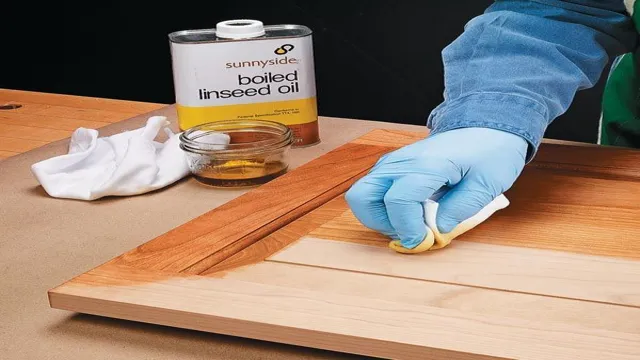
Wood is undoubtedly one of the most versatile and popular materials used for flooring, furniture, and decorations. It’s not only durable and long-lasting but also adds natural beauty and warmth to any space. One of the most common ways of preserving and enhancing the appeal of wood is by using linseed oil.
However, there are situations where you might need to remove linseed oil from wood, especially when it has become old, deteriorated, or stained. So how do you do this without damaging the wood surface? This guide will provide you with some practical tips and tricks to remove linseed oil from wood effectively.
Introduction
Linseed oil is a popular choice for protecting and preserving wood, as it penetrates deeply and enhances the color and grain. However, accidents can happen, and you may find yourself with an unwanted spill or stain on your wood surface. The good news is that removing linseed oil from wood is not an impossible task.
First, try wiping the affected area with a clean cloth dipped in mineral spirits or turpentine, which should dissolve the oil. If the stain is stubborn, you can also use a mixture of baking soda and water, or vinegar and water, to create a paste that you apply on the stain and let sit for a few hours before wiping away. Remember to always test any cleaning solutions on a small, inconspicuous area first and to wear protective gloves and ventilate the area to avoid inhalation of fumes.
With some patience and elbow grease, you can say goodbye to that pesky linseed oil stain and restore your wood’s natural beauty.
What is Linseed Oil?
Linseed oil is a versatile oil that has been used for centuries. Also known as flaxseed oil, it is pressed from the seeds of the flax plant. Linseed oil is known for its many benefits and is commonly used in woodworking, painting, and even in food.
This oil has been used for various medicinal purposes, including reducing inflammation and promoting skin health. It contains high amounts of alpha-linolenic acid (ALA), an omega-3 fatty acid that is essential for maintaining good health. With its many uses and benefits, it’s no wonder that linseed oil has remained a popular choice over the years.
So, what exactly is linseed oil? In essence, it’s a valuable oil that has been used for a variety of purposes and is known for its numerous benefits.
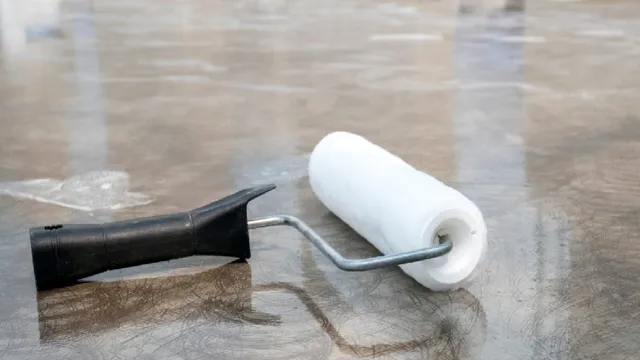
Why Remove Linseed Oil from Wood?
Linseed oil is a popular choice for many who wish to enhance the natural beauty of their wooden surfaces. It is a colorless substance that provides a glossy finish and protects the wood from weathering. However, over time, linseed oil can become problematic for wooden surfaces, as it can dry out and create a thick, sticky residue that attracts dirt and grime.
This residue can also make it difficult to apply new coatings or finishes, as they do not adhere well to the surface. As a result, many people choose to remove linseed oil from their wooden surfaces to ensure they remain clean, smooth, and inviting. Removing linseed oil helps to maintain the natural beauty of the wood and ensures that it remains in good condition for many years to come.
Methods for Removing Linseed Oil
If you’re wondering how to remove linseed oil from wood, you’ve come to the right place! First, it’s important to note that linseed oil is a pretty stubborn substance, so you may need to use some elbow grease to get rid of it. One of the easiest methods involves using hot soapy water and a scrubber to work the linseed oil off the wood’s surface. If that doesn’t work, you can try using a mixture of baking soda and water, or even rubbing alcohol.
Another option is to use a commercial solvent like mineral spirits, but use caution as these chemicals can be harsh and emit fumes. Overall, removing linseed oil from wood may take some time and effort, but with the right tools and techniques, it’s definitely possible.
Method 1: Using Mineral Spirits
Linseed oil is known for its durability and versatility, making it a popular choice for wood finishing and painting. However, if you accidentally spill linseed oil on your clothes or furniture, it can be tough to remove. One method for effectively removing linseed oil is by using mineral spirits.
To use this method, start by taking a clean cloth and dabbing it into a small amount of mineral spirits (make sure to wear gloves and work in a well-ventilated area). Gently rub the cloth onto the stained area and watch as the linseed oil begins to lift from the surface. Keep repeating this process until the stain is fully removed.
Once you’ve removed the stain, make sure to wash the area with warm soapy water to remove any residue and let it dry completely. Remember to always handle mineral spirits with caution, as it is a flammable substance that can be harmful when inhaled.
Method 2: Using Vinegar and Baking Soda
Linseed oil can be a tricky substance to remove from surfaces, but there are various methods that you can try. Method 2 involves using vinegar and baking soda, both of which are common household items. First, apply vinegar to the linseed oil stain, making sure to cover it completely.
Let it sit for a few minutes before sprinkling baking soda on top of the vinegar. This will create a chemical reaction that causes the two substances to foam up. You should leave this for about 30 minutes before scrubbing the area with a brush or cloth.
Rinse the area with water and repeat the process if necessary. This method is effective because vinegar is acidic and can break down the oil, while baking soda acts as an abrasive to remove any remaining residue. With a bit of patience and elbow grease, your surfaces can be free from linseed oil in no time.
Method 3: Using Sandpaper and a Solvent
Linseed oil is a natural wood finish that is commonly used to protect and enhance the beauty of wooden surfaces. However, there may come a time when you need to remove linseed oil from your wooden furniture or floors, such as when you want to change the finish or if the linseed oil has become damaged or worn. One method for removing linseed oil is by using sandpaper and a solvent.
Start by sanding the surface of the wood with fine-grit sandpaper to remove as much of the linseed oil as possible. Then apply a solvent, such as mineral spirits or denatured alcohol, to a clean cloth and wipe down the surface of the wood. This will help to dissolve the remaining linseed oil and make it easier to remove.
Repeat as necessary until all the linseed oil is removed. Remember to take proper safety precautions, such as wearing protective gloves and working in a well-ventilated area, when working with solvents. By using this method, you can effectively remove linseed oil and prepare your wood surface for a new finish.
Precautions to Take When Removing Linseed Oil
Removing linseed oil from wood is a process that requires attention to detail and caution. Linseed oil can seep deep into the pores of the wood, making it challenging to remove fully. The first precaution to take is to ensure that you are in a well-ventilated area, as the fumes from the linseed oil can be harmful if inhaled.
Additionally, it is essential to use the proper tools, such as gloves and goggles, when performing this task. A scraper or sandpaper can be used to remove the linseed oil, but you must be careful not to scratch the wood’s surface. It is best to start with a minimal amount of pressure and gradually increase it until the oil is removed.
Once all the linseed oil is removed, make sure to clean the surface with a gentle cleaner and allow it to dry thoroughly. In conclusion, by taking the necessary precautions, you can safely and effectively remove linseed oil from wood and restore its natural beauty.
Wear Protective Gear
When it comes to removing linseed oil, it’s important to take certain precautions to ensure your safety. First and foremost, always wear protective gear such as gloves, goggles, and a face mask. Linseed oil can be irritating to the skin, eyes, and respiratory system, so it’s important to protect yourself while working with it.
In addition to protective gear, make sure you’re working in a well-ventilated area to avoid inhaling any harmful fumes. To remove linseed oil, you can use mineral spirits or a specialized linseed oil remover. Whichever method you choose, be sure to follow the manufacturer’s instructions carefully and avoid any open flames or sparks in the area.
After removing the linseed oil, thoroughly clean any tools or surfaces that came into contact with it. Dispose of any rags or waste properly, as linseed oil can combust and pose a fire hazard. By taking these precautions and following proper procedures, you can safely and effectively remove linseed oil from your surfaces and tools.
Work in a Well-Ventilated Area
When it comes to removing linseed oil, it’s important to take several precautions to ensure your safety. One of the most important precautions to take is working in a well-ventilated area. Linseed oil can produce fumes that can be harmful when inhaled for extended periods of time.
Therefore, it’s essential to have adequate ventilation to allow fresh air to circulate in the workspace. Ventilation can be achieved by opening windows and doors or using fans to bring in fresh air and remove stale air. In addition, wearing protective gear such as a respirator mask can also help to prevent inhalation of harmful particles.
By taking these precautions, you can ensure a safe and effective removal of linseed oil from your surfaces.
Conclusion
In the battle of linseed oil versus wood, it can be a sticky situation. However, with the right tools and methods, victory is possible. From sanding and scraping to using solvents and cleaners, there are plenty of ways to remove linseed oil from wood.
Just remember to wear protective gear and take your time, as rushing into battle could result in more harm than good. So roll up your sleeves, put on your gloves, and show that linseed oil who’s boss – your wood will thank you for it!”
FAQs
Can I remove linseed oil from wood using household items?
Yes, you can use a mixture of vinegar and water to remove linseed oil from wood. Mix equal parts of white vinegar and water, then dip a soft cloth into the solution and rub it onto the affected area. Wipe off the excess with a dry cloth.
Is it safe to use chemical solvents to remove linseed oil from wood?
Yes, it is safe to use chemical solvents to remove linseed oil from wood as long as you follow the instructions on the label carefully and take the necessary safety precautions such as wearing gloves and a respirator. Examples of chemical solvents that can be used include mineral spirits and denatured alcohol.
How long does it take to remove linseed oil from wood?
The time it takes to remove linseed oil from wood depends on the amount of oil, the type of wood, and the method you’re using. For example, if you’re using a chemical solvent, it can take anywhere from 30 minutes to a few hours, while using a mixture of vinegar and water can take longer.
Can linseed oil be removed from unfinished wood?
Yes, linseed oil can be removed from unfinished wood. However, it may take longer to remove than from finished wood since the oil has not penetrated the surface as deeply.
Can sanding remove linseed oil from wood?
Yes, sanding can remove linseed oil from wood, but it can be time-consuming and may damage the surface of the wood. It’s best to use sanding as a last resort if other methods have not been successful.
How do I prevent linseed oil from soaking into wood in the first place?
To prevent linseed oil from soaking into wood, apply a sealant or finish to the surface of the wood before applying the oil. This will create a barrier that prevents the oil from penetrating the wood fibers.
Can linseed oil stains be removed from clothing or upholstery?
Yes, linseed oil stains can be removed from clothing or upholstery by soaking the affected area in a mixture of dish soap and warm water for 30 minutes, then washing the item in the washing machine with a stain removal product. It’s important to act quickly to prevent the stain from setting.

